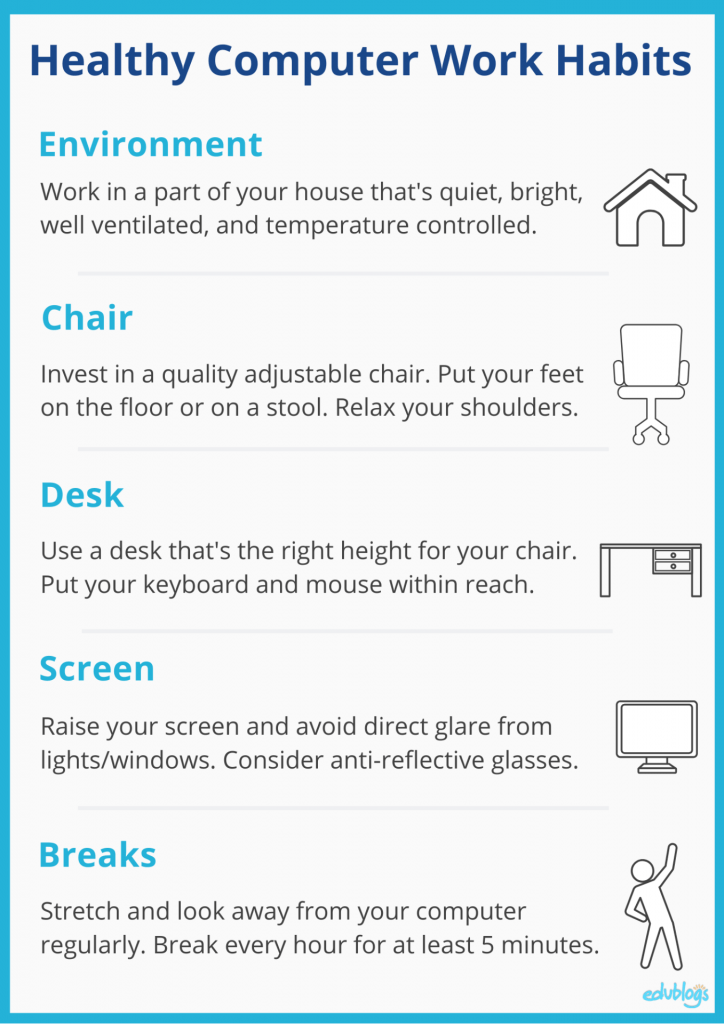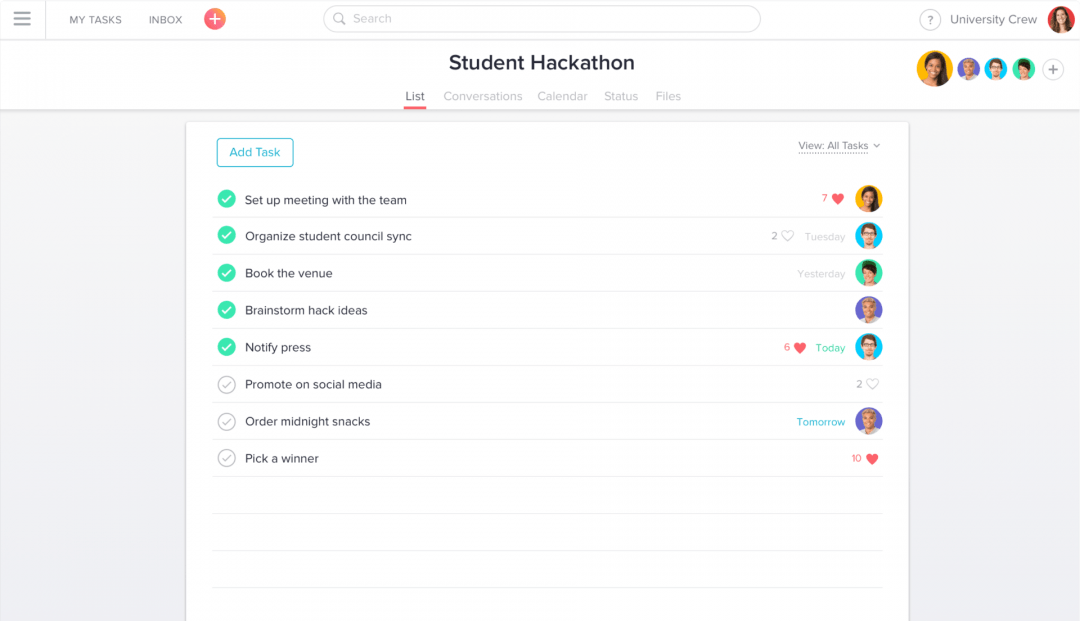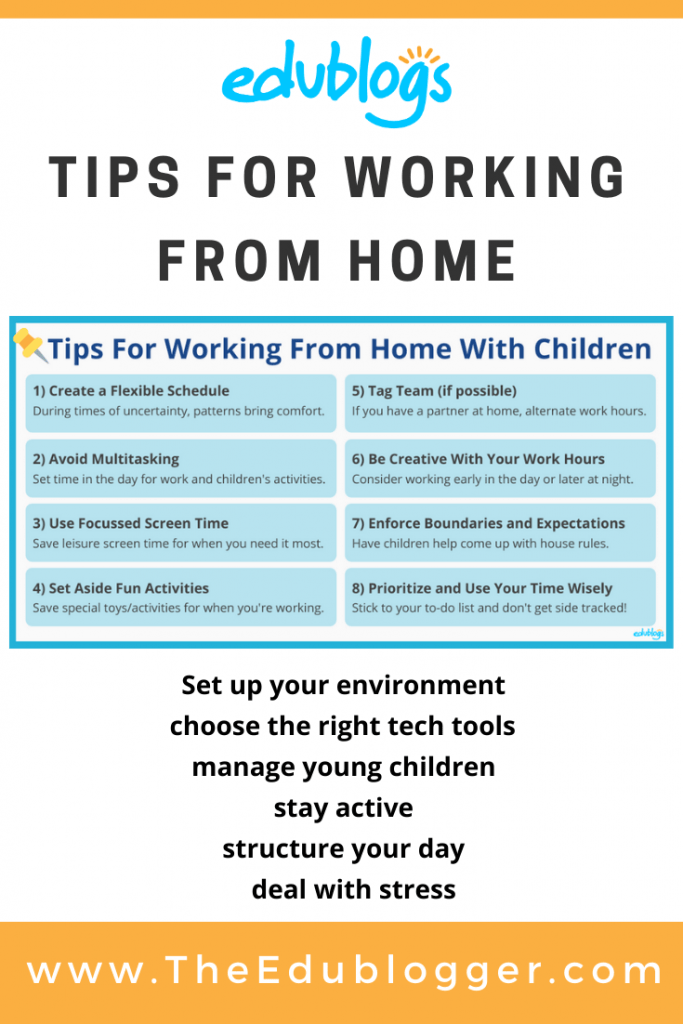The statistics around school closures due to COVID-19/Coronavirus are nothing short of staggering.
In mid-February, China was the only country in the world with school closures. Today, there are 188 countries experiencing nationwide school closures and almost 90% of the world’s students are affected.
Millions of teachers have been thrown into teaching remotely from home. This is drastically different from working in a classroom. It’s different physically, socially, and psychologically. And this change has come with almost no warning or preparation.
In this post, we are sharing our top tips for working remotely from home.
This is a collaborative post from Sue Waters and Kathleen Morris.
Sue is a former lecturer who has been working remotely since 2008. In recent years she has provided palliative care full-time for her mother while also overseeing the care of her disabled sister. All while managing full-time work from home and running a household.
Kathleen is a primary school teacher who has transitioned to working from home over the last few years. Kathleen’s 6-year-old daughter was diagnosed with leukemia 10 months ago so she has plenty of tips about juggling responsibilities — work, medical treatment, homeschooling, and parenting young children.
Onto the tips! We’ll go through:
Work Environment
In the classroom, you’re probably sitting, standing, walking, bending down, and generally engaging in a whole range of natural movements.
Teaching remotely means you’re more likely to sit longer working at a computer so there’s a greater risk of injury. It’s important to make sure your work area is set up properly so you can maintain good posture.
Some teachers are starting to get into the habit of working from the couch or a poorly set up kitchen table. Not only is it better psychologically to have a dedicate work area, you really need to look after your posture.
If you can, consider investing in a supportive chair.
Here are some tips to ensure you’re sitting correctly at your computer:
Sue has had bursitis in her shoulder from bad posture and knows other remote workers that have had similar issues. Don’t let yourself get injured due to a poor work environment! You have enough going on already.
Any prolonged time spent in one position can cause problems. Ideally, every hour you should get up from the computer and walk around for 5 minutes; every 3 hours have a break for 15 minutes minimum.
Switching to a standing desk won’t necessarily help. Extended periods in similar postures can lead to fatigue or injuries. Moving and changing positions throughout the day is key.
Here are some key tips for staying healthy when working on a computer. You might like to share these with students as well.
📌 Download a PDF version of the tips.
Tools For Working
Working remotely is different from working within a school or office environment, and finding tools that help improve work efficiency in a remote environment makes a big difference.
The key is to focus on what you’re wanting to achieve and then work out the best tool(s) to achieve your outcomes most efficiently.
Here are just some of the tools we use to improve work efficiency in our team that might help you too.
Communication Tools
As a teacher working remotely, you’ll need to stay in regular communication with your team. You no doubt have year level or subject area teams, perhaps special project groups, as well as your whole staff team.
We find it very helpful to use tools that reduce email exchanges where possible. Emails can quickly get out of hand!
When our team was smaller we used Google Chat with our Gmail accounts (now called Google Hangouts/Meet) and nowadays we use Slack.
Very few emails are sent internally within our team because we’re now able to more efficiently manage it using Slack. Decreased emails mean less time spent replying to emails or losing track of conversations in email threads.
The key features and benefits of Slack include:
- Free for small teams (no advertising or time limits)
- Useful search function to look for previous conversations, keywords, or files (the free plan just allows you to search the last 10,000 messages as opposed to an unlimited search)
- Real-time OR asynchronous messaging (if a colleague is offline, they can get back to you later)
- Different channels can be set up for different groups (for example, you could be in a whole staff channel, year six teachers channel, and team leader channel)
- Communication via text or voice/video call
- Channels can be public (any staff member can join) or private (invitation only)
- Direct messages allow you to communicate privately with one or more colleagues

Slack is ideal for our team as we have over 100 staff at Edublogs, CampusPress, and WPMU-DEV.
Nowadays, our meetings are held using a Slack call or Google Hangouts. Some teachers find Google Hangouts is a good way to stay in touch as well. It has the added benefit of being linked to your Gmail account so you can easily search for conversations.
Collaboration Tools
Look for tools that allow you to easily collaborate with others.
We use Google Docs and Google Sheets because these enable us to work collaboratively and add comments for feedback.
We try to encourage all clients to use shared Google Docs and Google Sheets rather than attached documents and spreadsheets to email because it is too easy to lose track of the latest version. If you’re not already making the most of Google Docs and Sheets in your school teams, give them a try!
You’ll find it’s more time-efficient to edit Google Docs and Google Sheets online than constantly download attachments as they’re updated.
Any files we want to share are uploaded to Google Drive. Many teachers and schools are embracing Google Drive which is a place to store your files securely and open/edit them from any device.
Here’s a quick Getting Started with Google Drive video to get you on your way
For managing tasks and projects we use Asana. It allows you to map out each step of tasks you’re working towards, and assign tasks to others. The free version is available for teams of up to 15 people so it might be worth looking at if you want to manage projects in small school teams.
Some students also use Asana themselves to keep track of school work and deadlines.
Working With Young Children At Home
You may find yourself now trying to teach while simultaneously looking after your children. It’s a new and challenging dilemma!
Kathleen has two young children and works from home a lot. Here are some tips that might work for you:
- Create a Flexible Schedule: Set a plan so the children know what’s on for the day. While you might not like the idea of a rigid schedule, having a basic routine can be a good idea because, during times of uncertainty, patterns bring comfort. I have included my sample schedule in my post with 10 Tips For Homeschooling Children.
- Avoid Multitasking: Set time in the day when you will be doing activities with your own children, and time when you will be working. Trying to do both at the same time will leave you all frazzled!
- Use Focussed Screen Time: Save screen time for when you really need it (for example, if you’re doing a video conference with your class). No matter what your beliefs on how much screen time you want your children to have, using leisure screen time sparingly makes it a more powerful and effective tool.
- Set Aside Fun Activities: Help your children decide what they are going to do independently while you’re working. You might have things you only get out during these times — for example, a certain toy box, play dough, craft supplies, etc.
- Tag Team If Possible: If you have a partner who is also working from home, consider making a schedule so you can tag the team. For example, one of you could get up early and work until lunchtime then switch. Or, you can negotiate times when you really need an uninterrupted block (for example, during video conferences, phone calls, or your “office hours” when you need to be on call).
- Be Creative With Your Work Hours: Make the most of the early hours of the day or the hours after your children go to bed at night. You might not want to work during both of these blocks so you don’t burn out, however, working a bit earlier or later in the day can really free up hours during the middle of the day when your children need you most.
- Set Boundaries and Expectations: Explain to your children that you must work and have them help come up with the family rules. For example, you might want to close your door when you can’t be interrupted. Then you can train your children to stay away if your office door is closed (I actually have a sign on my door that I made together with my children). If they interrupt you (and it’s not an emergency), calmly remind them of the rules. Running through emergency/important scenarios is always a good idea, e.g. someone is hurt, something is broken, there’s a knock at the door etc.
- Prioritize and Use Your Time Wisely: I quickly learned that when I have dedicated work time, I must put my head down and work! A quick check of emails or social media can waste precious time. When your time is limited, write down what you want to achieve and make yourself stick to that list. Prioritize your most important goals for the day.
Working from home with children can be messy. Give yourself some time to figure out what works for you and your family. It won’t always be perfect but with some creative scheduling and routines, it can work!
Daily And Weekly Structure
While it’s easier said than done at times, work-life balance is very important.
Sue and Kathleen work as part of a global team supporting a global community and work hours are very flexible. We could work 24 hours a day and there would always be more to do.
Teaching has always been a never-ending job as well; there is always something to do even when you don’t have students in front of you. Now that you’re working from home, you might be feeling the pressure to work long hours even more.
Time tracking can be a powerful tool. If you aren’t required to track hours then we suggest you keep a simple spreadsheet to record start and finish times of blocks of work. You can include a simple record of what you’ve done to help identify how long tasks take. This helps identify ways you can improve work efficiency while also helping to keep focus on work-life balance.
Sue tries to make her weekends different from her weekdays as it’s too easy with her work, and personality, to end up working 7 days a week.
Obviously, this is harder if you are now in lockdown, however, setting goals of things you want to achieve in your personal life and working on these on the weekend helps. Why not try making a list of non-work activities you’d like to conquer? It could be anything from cleaning out your closet to starting a new art project.
Staying Active
Do you have a Fitbit or other step counter? Kathleen has noticed a big difference in the number of steps you can rack up during a day in the classroom compared to a day working from home.
We all know being sedentary isn’t healthy and it’s important to think of ways to stay active while you’re at home.
Sue is an avid walker and Kathleen enjoys jogging, however, there are times when you can’t get out of the house.
Kathleen has some favourite online workouts which you might like to check out:
- Les Mills On Demand: These are popular gym classes that you can stream at home. There are all sorts of workouts — aerobics, weights, yoga, spin etc. It’s like a Netflix of workouts. This is a paid service but they currently have a 30 day free trial. Might as well make the most of that while you’re home. Just don’t forget to cancel your trial.
- POPSUGAR Fitness: This YouTube channel has been running for years and offers very professional workouts for free! There is so much variety! There are long and short workouts and everything from dance, HIIT, barre, weights and more.
- Heather Robertson: These free YouTube videos are around 30-40 minutes long and offer you a really solid workout with fairly simple routines. Kathleen likes the way you can see what move is coming up and next and there are no audio cues, so she often listens to a podcast or her own music while following along.
- MadFit: This free YouTube channel is simple and effective. There are lots of workouts around 20 minutes long as well as quick videos where the routine is choreographed to a popular song. A fun work break!
There are lots of apps available as well. For example, many people like the free workouts on Nike Training Club. The “7 minute workouts” are very popular as well as they provide you with bang for your buck in a short amount of time. You could try one like this at the end of every hour of work.
If digital workouts aren’t your thing, think of other things you can schedule into your day to ensure you’re getting regular physical activity. A few hours of gardening is a good workout, as is giving your house a deep clean.
We’d love to hear about your favourite at-home workouts in a comment.
Dealing With Stress
Sue has been dealing with high stress since 2017 when she became responsible for the full-time care of her mother who had life-limiting motor neurone disease (ALS). Sue also oversees the care of her disabled older sister. Kathleen’s been on a stressful rollercoaster since her daughter was diagnosed with leukemia in 2019 at 5 years old.
Maybe you felt a little blindsided by the pandemic? Suddenly your entire life’s turned upside down. What was normal no longer exists; and you’re having to adapt to a rapidly evolving new normal on a daily, or if you are lucky, weekly basis.
Maybe, like us, you’re dealing with not only the pandemic but serious personal issues as well? Not to mention work, homeschooling, isolation, and all the other challenges of this crazy new world.
We’ve both learned how important it is to know our own symptoms of stress and what strategies help us reduce the impact stress has on us.
Did you know there are many signs and symptoms of stress?
We all react to stress differently. Learning strategies to deal with stress helps reduce its mental, physical and emotional impact.
Like our reactions, our coping strategies are personal. What works for some people might be boring or stressful for others but here’s what helps us:
1. Focus on the NOW
When you’re dealing with a life-limiting disease or cancer, you can’t afford to focus on the past or spend time trying to predict the future — you need to focus on the present. Grieving the loss of the normal you had in the past or worrying about what the future holds means you miss out on the magic happening in the present.
COVID-19 is proving to be a rapidly evolving situation and you can’t tell what will happen from one day to the next.
The best approach is to focus on each day; try not to look too far ahead and just think about what you need to do for the current day or week.
2. Accept what you can CHANGE
Don’t waste time worrying about things that are out of your control that you can’t change, or planning for the worst. Identify what you can change and what’s worth fighting for; let go of the things that you can’t change.
Here’s a great graphic from The Counseling Teacher:
3. Look for JOY
After Sue’s mum died she organized her house as part of her way of dealing with the trauma, part of which included some of Marie Kondo’s methods. The most important lesson she learnt from Marie Kondo was joy.
Whatever you do in life, whatever your situation, keep looking each day for what gives you joy.
Sue’s house mightn’t be spotless, and her husband might continually try to sabotage her lovely KonMari folding of clothes (she’s still working on letting go of how her hubby folds), but she ends each day reflecting on the things that gave her joy during that day and the positive things that were achieved.
4. Do something relaxing
The best way to reduce stress is to do things that you find relaxing. However, it’s very challenging when your favourite forms of relaxation may no longer be options (catching up with friends, cafes, movies, gym classes, concerts and so on).
Sue spent 17 months caring full-time for her mum. Her mum was connected 24/7 to a machine that assisted her breathing which meant someone needed to be in the house at all times. Sue could only leave the house if someone was available which meant there were only a few hours a week where she was able to go out. Kathleen’s situation has been similarly intense and she’s had many months of isolation due to her daughter’s compromised immune system.
The key is, if you can’t do what you normally do for relaxation, look for alternatives.
Sue finds setting goals she wants to achieve helped her. She created a list of 100+ Crime and Mystery novels of all time and has been working through the list. Currently, she’s back to her goal of walking for at least 45 minutes daily and has set up a daily eating plan with an emphasis on healthier eating.
There are lots of ways to relax, even in isolation. Here are some more ideas from The Counseling Teacher (ignore the spa example for now! 😉).
5. Have a Routine
Sue and Kathleen both find having routines helpful. We both have a rough outline of our daily routine for our weekdays and our weekends while ensuring it’s flexible to adapt to our changing circumstances.
Our routines include time for exercise, work, family commitments and relaxation. We both have “to do lists” of things we want to achieve.
Keeping ourselves organized helps us manage our time in the most efficient way. It’s far from perfect but we find it works much better than having a “let’s see what happens” approach!
6. Say No
Sue and Kathleen have both been called workaholics and can be quick to take on more than they can handle. We’ve both learnt it’s okay to say no.
If you don’t want to do it, or it’s taking away from what you really want to be doing, don’t feel guilty saying no.
Saying yes when you don’t want to do something is saying no to yourself. Put yourself first. Especially during times of high stress.
7. Laugh!
Laughter really is the best medicine. It helps keep you relaxed and happy while relieving tension.
A small silver lining emerging from the trauma of COVID-19 is the humour. The jokes and memes that are being thrown around social media on a daily basis show that humour is a coping strategy for so many of us around the globe!
What Tips Can You Add?
Although it probably feels like you have more work to do than ever before, there’s never been a better time to focus on your own health, wellbeing, and routines.
Teaching remotely is a brave new world and you need to look after yourself. You’re an essential worker and the world needs you!
We’d love to hear how you’re approaching working from home. Please scroll down to find the comment box.










Fantastic insights! The shift to remote work has transformed the education landscape, and it’s enlightening to see teachers thriving while working from home. Effective time management, boundary setting, and leveraging digital tools are crucial for productivity. I appreciate the emphasis on self-care and maintaining work-life balance. As educators navigate this new normal, sharing best practices and experiences will foster a supportive community. Keep sharing valuable resources! Want to know about Types of Human Trafficking.
I like that the story had a lot of details. And something they did well is publish and I like how they talk about COVID affected many people.
I can relate to what she said about COVID because COVID really affected one of my family member.
This global pandemic is taking a toll on all of us. We are entering new realms every day and this blog was really helpful. Here’s another blog on the similar lines that you may find worth a read.
https://blog.teachmint.com/teach-from-home/
Thanks for this fantastic material and write up.
thanks forsharing
Thank you so much for these awesome tips on how to teach from home!
Good luck, Zaire! I hope it helps!
This was excellent! Love the combination of text and infographics 🙂
Thank you!
I recently shared with staff some of the structures and routines that have helped me transition. One of the small ones that has really paid off is my transition from “work” to “home”. When I am done working, I leave the house and take a walk around the block. The walk has served as my transition or my “drive home from work”. I use it to shift my mindset by leaving work behind and shifting to a more “at home” mentality.
Hi Chris, This is such a great idea! Personally, I love going for a walk between finishing afternoon work and making dinner during lockdown as well. It is an excellent way to shift your mindset even if you only have time for a walk around the block.
Thanks for sharing your wonderful tip!
Thanks a lot. I found this fun and helpful. All the best 🙂
Great tips and very practical and convenient for this time.
My blog has been a life-saver for on-line teaching. I post assignments 3-5 times a week as well as general comments. My students were already in the habit of checking the blog for assignments, making the transition to on-line education easier. Thank you!
That’s awesome, P.J! Is it a private or public blog?
Thanks for sharing. Working from home is not easy. :(. Take care and be safe .
You too, Rahimah!
I really enjoyed reading this article. I already shared it with my fellow teachers and people who are in this situation right now. Gratitude!
Excellent way to move forward around this phenomena caused by covid-19. Thanks for sharing those wonderful tips. My challenge: try to do my best with them. Blessings to you all.
Thank you, Luis. All the best to you!